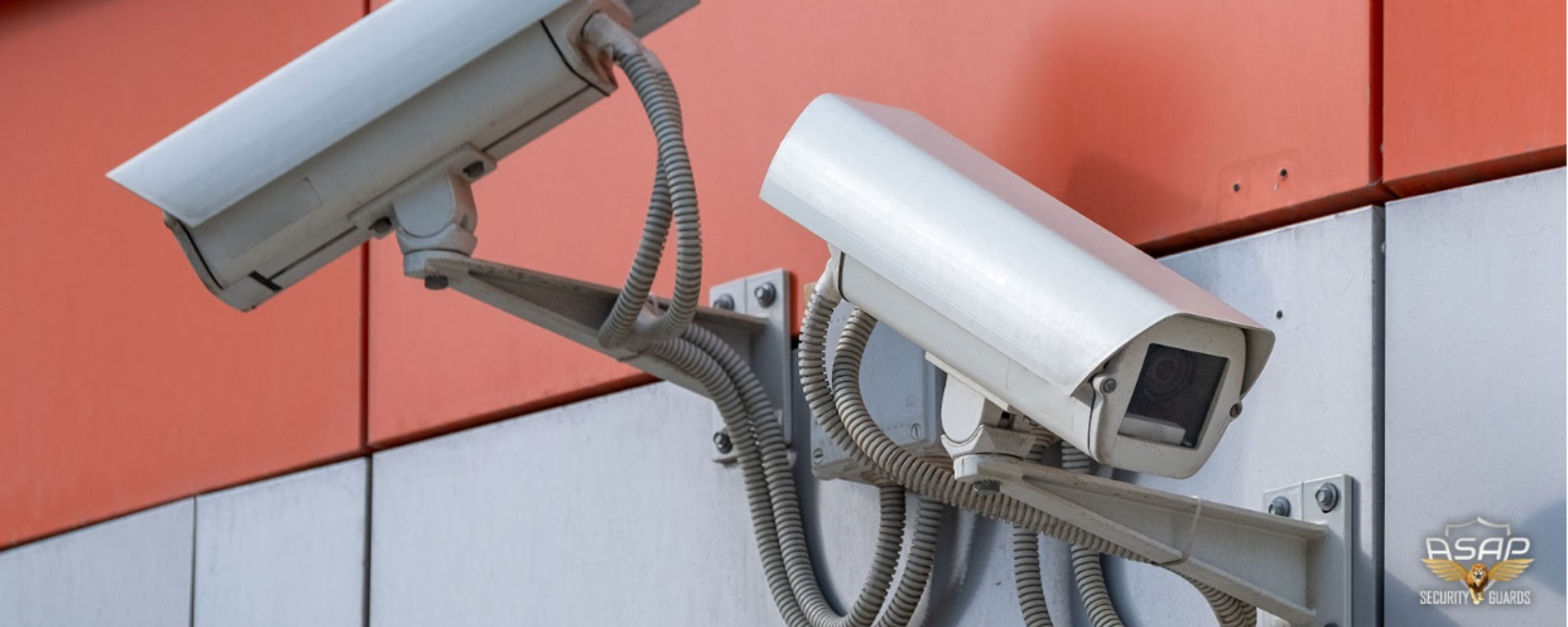Written by Rafi Kalliny
In today’s increasingly digital world, securing physical assets, like warehouses, is often overlooked. However, warehouse security plays a crucial role in protecting valuable inventory, preventing theft, and ensuring the smooth operation of businesses. This article will explore the importance of warehouse security and provide you with key elements to implement a comprehensive security plan. Additionally, we will discuss the significance of training staff, legal and insurance considerations, and the importance of measuring the effectiveness of your security measures.
 Understanding the Importance of Warehouse Security
Understanding the Importance of Warehouse Security
Warehouses are pivotal in supply chains as they store large quantities of valuable goods. Therefore, safeguarding these assets is essential. Warehouse security not only protects inventory but also helps maintain customer trust and prevent financial losses. By investing in robust security measures, businesses can mitigate the risk of theft, ensure employee safety, and safeguard sensitive information.
The Role of Security in Warehouse Operations
Warehouse security goes beyond theft prevention. It also plays a vital role in day-to-day operations. Security measures, such as access control systems and surveillance cameras, and security guards on patrol can help monitor employee activities, detect potential safety hazards, and improve overall operational efficiency. Additionally, security measures can help in adherence to regulatory compliance in industries with specific security requirements.
Moreover, advanced security technologies like biometric scanners and RFID tagging systems are revolutionizing warehouse security. Biometric scanners provide an extra layer of protection by verifying the identity of individuals accessing sensitive areas, while RFID tagging enables real-time tracking of inventory, reducing the risk of internal theft and streamlining logistics processes.
Consequences of Neglecting Warehouse Security
Neglecting warehouse security can have severe consequences for businesses. Theft not only leads to financial losses but also damages the reputation of a company. Additionally, without proper security measures, businesses may face costly legal battles and potential insurance claims. By ignoring warehouse security, businesses leave themselves vulnerable to operational disruptions, decreased productivity, and even the loss of customer trust.
Furthermore, in today’s digital age, cybersecurity is an integral aspect of warehouse security. With the rise of e-commerce and interconnected systems, warehouses are increasingly becoming targets for cyber attacks. Implementing robust cybersecurity protocols, such as firewalls, encryption, and regular security audits, is crucial to protect sensitive data and prevent breaches that could compromise the entire supply chain.
 Key Elements of a Secure Warehouse
Key Elements of a Secure Warehouse
A secure warehouse incorporates various physical and technological security measures to protect assets and deter potential intruders effectively. Implementing the following key elements will significantly enhance warehouse security.
Physical Security Measures
- Controlled Access Systems: Installing access control systems, such as electronic key card readers or biometric scanners, can restrict entry to authorized personnel only.
- Video Surveillance: Strategically placing high-quality surveillance cameras throughout the warehouse can help monitor activities, act as a deterrent, and provide evidence in case of incidents.
- Perimeter Security: Fencing, locks, and gates fortify the external boundaries of the warehouse, preventing unauthorized access.
- Lighting: A well-lit warehouse, both inside and outside, discourages theft by eliminating potential hiding spots and increasing visibility.
Ensuring physical security is crucial, but it is equally important to consider other aspects that contribute to a secure warehouse environment. Let’s explore some additional measures that can be implemented.
Employee Training and Awareness
One of the most effective ways to enhance warehouse security is by providing comprehensive training to all employees. By educating them about security protocols, recognizing suspicious activities, and reporting potential threats, employees become an integral part of the security system. Regular training sessions and awareness programs can empower employees to be proactive in identifying and addressing security risks.
Security Audits and Assessments
Regular security audits and assessments play a vital role in identifying vulnerabilities and evaluating the effectiveness of existing security measures. Conducting thorough inspections, both internally and externally, allows warehouse managers to identify areas that require improvement. These audits can help identify blind spots in surveillance coverage, weak points in access control systems, or any other potential security gaps that need to be addressed promptly.
Technological Security Solutions
- Alarm Systems: Installing alarm systems with motion sensors and intrusion detection can alert security personnel or law enforcement authorities to potential security breaches.
- Inventory Management Systems: Utilizing advanced inventory management systems with real-time tracking capabilities helps identify discrepancies and ensures accurate stock management.
- Security Software: Implementing robust cybersecurity measures such as firewalls, encryption, and regular software updates protect against cyber-attacks and data breaches.
By integrating these technological security solutions into warehouse operations, businesses can significantly enhance their ability to detect and respond to security threats effectively.
Remember, a secure warehouse is not just about implementing a few security measures; it requires a comprehensive approach that combines physical security, employee training, regular audits, and advanced technological solutions. By investing in these key elements, businesses can create a secure environment that safeguards their valuable assets and ensures peace of mind.
 Implementing a Comprehensive Security Plan
Implementing a Comprehensive Security Plan
To ensure the effectiveness of your warehouse security measures, it is crucial to develop a well-structured security plan. This plan will serve as a roadmap for implementing and maintaining security practices.
Steps to Develop a Security Plan
- Assessing Vulnerabilities: Conduct a thorough assessment of your warehouse’s strengths and weaknesses to identify potential security vulnerabilities.
- Designing Security Measures: Based on your vulnerability assessment, develop a tailored security plan that addresses specific risks and focuses on prevention and detection.
- Implementing Security Measures: Enforce and implement the security plan by installing physical security measures, investing in technological solutions, and providing proper training to employees.
- Incident Response Procedures: Outline clear and efficient procedures to follow in case of security incidents, ensuring a swift and appropriate response.
- Regular Review and Update: Continuously review and update security measures to adapt to evolving threats and technological advancements.
Regular Review and Update of Security Measures
Implementing a security plan is not a one-time task. Regularly reviewing and updating security measures is essential to ensure ongoing effectiveness. Stay informed about new security technologies, industry best practices, and emerging threat trends. Conduct regular audits of security procedures, check cameras and alarms for proper functionality, and seek feedback from employees to identify areas for improvement.
Regular review and update of security measures is a critical aspect of maintaining a comprehensive security plan. By staying proactive and vigilant, you can ensure that your warehouse remains secure against potential threats. One important step in this process is to stay informed about new security technologies. As technology continues to advance, new tools and solutions are constantly being developed to enhance security measures. By keeping up with the latest advancements, you can identify opportunities to strengthen your security plan and stay one step ahead of potential threats.
In addition to staying informed about new technologies, conducting regular audits of security procedures is another vital step in the review and update process. These audits allow you to assess the effectiveness of your current security measures and identify any areas that may need improvement. By thoroughly examining your procedures, you can identify potential vulnerabilities and take proactive steps to address them. This could involve updating access control systems, enhancing surveillance capabilities, or implementing additional training programs for employees.
 Training Staff for Better Warehouse Security
Training Staff for Better Warehouse Security
While physical and technological security measures are crucial, the role of employees should not be underestimated. Properly trained and aware employees can proactively contribute to warehouse security.
Importance of Employee Training
By educating employees about security protocols, potential threats, and the importance of maintaining security, companies can create a culture of security awareness. Training empowers employees to identify and report suspicious activities promptly, follow security procedures correctly, and ensure compliance with security policies.
Employee training is not just about understanding rules and procedures; it also fosters a sense of responsibility and ownership among staff members. When employees feel invested in the security of the warehouse, they are more likely to actively participate in maintaining a safe and secure environment. This sense of shared responsibility can significantly enhance the overall effectiveness of security measures.
Best Practices for Security Training
Develop a comprehensive training program that covers topics such as access control, surveillance systems, emergency response, and cyber awareness. Offer regular refresher training and provide opportunities for employees to ask questions or provide feedback. Encourage an open dialogue between employees and security personnel to address concerns and improve overall security awareness.
Furthermore, consider incorporating practical exercises and simulations into your training sessions. Hands-on experience can help employees better understand security protocols and respond effectively in real-life scenarios. Additionally, recognizing and rewarding employees who demonstrate exemplary security practices can serve as positive reinforcement and motivate others to actively engage in security efforts.
 Legal and Insurance Considerations for Warehouse Security
Legal and Insurance Considerations for Warehouse Security
Warehouses must also consider the legal and insurance aspects of their security measures.
Ensuring the security of a warehouse involves more than just physical measures; it also requires a thorough understanding of the legal and insurance implications. By delving into these aspects, warehouse managers can better protect their assets and employees.
Understanding Legal Obligations
Be aware of the legal requirements and regulations related to warehouse security in your local jurisdiction. Compliance with these regulations is crucial to avoid legal penalties and ensure the safety of your employees and the protection of your assets.
Legal obligations can vary widely depending on location, so it’s essential to stay informed and up to date on any changes in legislation. This may include requirements for surveillance systems, access control measures, or emergency response protocols. By staying compliant, warehouses can mitigate risks and operate with confidence.
Role of Insurance in Warehouse Security
Consult with your company’s insurance providers to understand the coverage options available to protect your warehouse from potential losses due to theft, natural disasters, or accidents. Insurance coverage can provide financial assistance in the event of security incidents, offering peace of mind to businesses.
Insurance plays a critical role in risk management for warehouses, providing a safety net in case of unforeseen events. It’s crucial to review and update insurance policies regularly to ensure they align with the evolving security needs of the warehouse. By working closely with insurance professionals, warehouses can tailor coverage to address specific security concerns and vulnerabilities.
 Measuring the Effectiveness of Your Security Measures
Measuring the Effectiveness of Your Security Measures
An integral part of maintaining a secure warehouse is routinely measuring the effectiveness of your security measures. This evaluation allows you to identify weaknesses, make relevant improvements, and adapt to changing threats. Consider the following measures.
Regular Security Audits
Conduct comprehensive security audits at regular intervals. These audits should include assessments of all physical and technological security measures to identify vulnerabilities and areas for improvement. Engage professional security consultants for in-depth assessments and recommendations.
During a security audit, it is crucial to not only focus on the existing security protocols but also to anticipate potential future threats. By staying proactive and forward-thinking, you can better prepare your warehouse for any emerging security challenges. Additionally, involving employees from various departments in the audit process can provide valuable insights and perspectives on security vulnerabilities that may have been overlooked.
Key Performance Indicators for Warehouse Security
Establish key performance indicators (KPIs) to measure the success of your security measures. These can include metrics such as the number of security incidents, incident response time, employee adherence to security protocols, and successful prevention of theft. Regularly review these KPIs to gauge the effectiveness of your security measures and make data-driven decisions for further enhancements.
Furthermore, consider incorporating benchmarking into your KPI analysis. By comparing your warehouse’s security performance against industry standards or best practices, you can gain valuable insights into areas where your security measures excel and where they may need improvement. Benchmarking can also help you set realistic goals for enhancing security and staying ahead of potential security threats in the ever-evolving landscape of warehouse security.
Conclusion
Investing in warehouse security is essential for businesses to protect valuable assets and prevent theft. By understanding the importance of warehouse security, implementing key security measures, training employees effectively, considering legal and insurance obligations, and measuring the effectiveness of security procedures, businesses can create a secure environment, minimize risks, and ensure the smooth operation of their warehouses.
Reach out to ASAP Security now for any questions or if you need a quote.
We are proud of our stellar customer service record, so check our website for all the testimonials from our various satisfied customers. Call ASAP Security at 1-833-272-7247

 Understanding the Importance of Warehouse Security
Understanding the Importance of Warehouse Security Key Elements of a Secure Warehouse
Key Elements of a Secure Warehouse Implementing a Comprehensive Security Plan
Implementing a Comprehensive Security Plan Training Staff for Better Warehouse Security
Training Staff for Better Warehouse Security Legal and Insurance Considerations for Warehouse Security
Legal and Insurance Considerations for Warehouse Security Measuring the Effectiveness of Your Security Measures
Measuring the Effectiveness of Your Security Measures